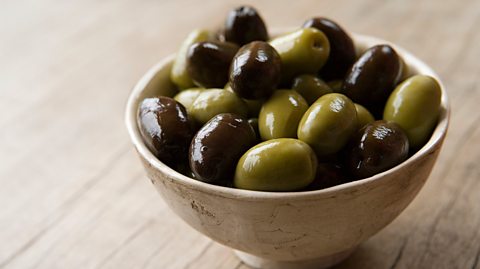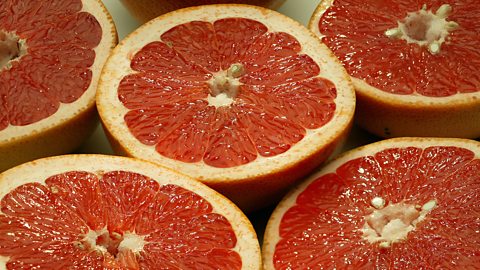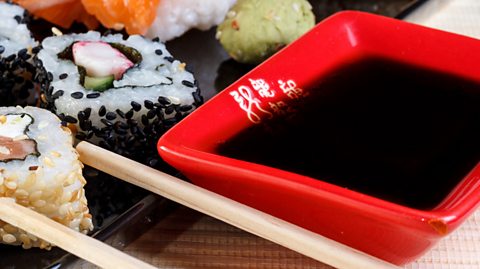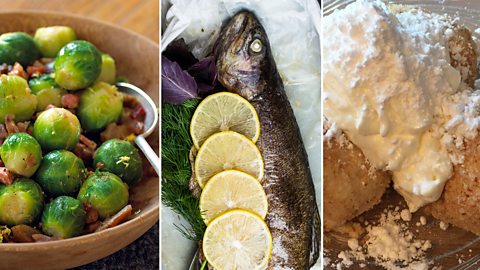
Tastes and tongues
Taste is one of our most important senses. It tells us which things are good to eat and which are not. Newborn babies like sweet tastes with sugar but not bitter tastes like green vegetables. We have to learn to like those.
We use our tongues to discover what food tastes like. There are five basic tastes the tongue can recognise, and for each of them there is a set of receptors that respond to this taste alone, like a set of locks that are opened by specific keys.
Receptors for each basic taste are packed into our taste buds and these are bundled into papillae ÔÇô the knobbly bumps that you can see on the tongue. So what are these basic tastes?

Sweet
We all like sweet things from the moment we are born. However, as we get older, some of us might not like sweet foods and drinks as much.
The sweet receptors on our tongues respond to different kinds of sugars in natural foods like fruits and honey, and in treats like chocolate and cakes. We sometimes need sugars for energy, so itÔÇÖs good that we can tell by tasting which foods contain sugars.
Some animals, like cats and chickens, donÔÇÖt have sweet receptors so they donÔÇÖt taste sugar at all!

Bitter
At first we donÔÇÖt like bitter tastes, and there is a reason for this. Most poisonous things taste bitter, so we naturally want to spit out bitter things. Being able to tell when something is bitter protects us from eating things that are bad for us.
But not all bitter tasting foods and drinks are bad. Green vegetables, olives, dark chocolate, tea and coffee can all be bitter, but many people enjoy eating them. We have to learn which bitter foods are good for us.
As people get older they usually like bitter tastes more. This is because they need stronger flavours as their taste buds grow weaker.
 Image source, Getty
Image source, GettySour
The sour receptors on our tongue help us to tell how much acid there is in what we eat and drink. Too much acidity will be bad for the stomach, but many people like the sharpness of lemon or lime to add a fresh flavour to foods and drinks.
As well as sugars, fruits have acids that keep them fresh and juicy. These slightly sour tastes make our mouths water, and the balance between sweet and sour is what we like in citrus fruits like oranges.
Our bodies need certain acids to help us break down foods, although we don't want to consume too much of them. The sour taste receptors on the tongue help us check just how much acid we are consuming.
The sour taste is good to add to our foods to give it a more lively taste. Think of adding vinegar to fish and chips.

Salt
The body needs a good balance between salt and water for our health and to regulate our sweat. In hotter countries we may need to take in more salt because we lose it when we sweat. However, the body doesnÔÇÖt make its own salt, so we need to get it from our food.
We put salt on our food to bring out the flavours of meats or vegetables. We also use salt to keep fish, meats and cheeses fresh.
The salt taste is not just down to the amount we sprinkle on our food. It depends on the number of taste buds we have on our tongues and how many are touched by salty foods at the same time. People with fewer taste buds on their tongues will need more salt for food to taste the same as it does for others.

Umami
The fifth basic taste can be the hardest to recognise. It is the strong savoury taste in mushrooms, miso soup and soy sauce. It can also be found in peas, tomatoes, cheese and seafood. It is hard to see what all of these foods have in common, but Japanese people would recognise them all as having the umami taste.
It wasnÔÇÖt until 2000 that scientists discovered that we had receptors on the tongue for umami.
The taste of umami in food tells us that we are eating foods with protein to give us energy and help us grow.
Why do some foods taste horrible?
Have you ever wondered why there are foods that everyone seems to love, like chocolate, while others don't have many fans?


